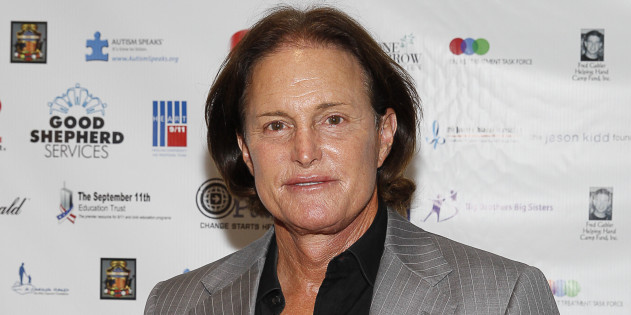What we learn from the media frenzy surrounding Bruce Jenner’s gender transition is not that trans lives matter, but that Jenner himself is a public spectacle whose body and identity are reasonably subject to our collective gaze.
I should start with a confession: The endless speculation around the gender identity of Bruce Jenner, Keeping Up with the Kardashians star and former U.S. Olympic track and field athlete, makes me uncomfortable. For months, entertainment blogs and tabloids have kept the masses happy with their transphobic and photoshopped articles about Bruce Jenner’s gender identity.
Last week, People.com joined the fray, publishing an article based on a tip from an “anonymous source close to the Jenner family,” who recently revealed to the publication that Jenner is transitioning to life as a woman.
If the source is correct, I am happy for Bruce Jenner, and I hope he has found joy and peace in his decision.
But I am still uncomfortable.
Not, of course, with Jenner’s gender identity, which is none of my business.
What’s troubling to me is the collective fascination with Jenner’s gender identity. This fascination reveals problematic truths about our culture, which is at once celebrity-fixated and transphobic. It reflects our society’s obsession with the cult of fame. This is not a new dilemma, but in a digital age, the ease of access to unverified, speculative “information” about celebrities is unprecedented. It also highlights the transphobia that is embedded deep within our cultural consciousness.
Here is where the Jenner story begins to falter. Even assuming that we, the public, have a right to know about Bruce Jenner’s gender identity (and we do not), the source remains anonymous. Worse still, Jenner himself has not released any statement, given any interviews, or otherwise made public any official comment about his gender identity, so I have to ask: What’s the story? And, perhaps more to the point: Why are we interested?
At the risk of alienating an entire profession: Celebrity “journalists” are vultures. The sort of magazines and media outlets that devote their attention to “breaking” this type of story—without the consent or confirmation of the primary source, a human being whose very identity is being speculated upon—does nothing to serve the greater good. It is bad journalism, designed to sell copy and generate revenue rather than to inform the public of anything newsworthy, and by turning news about transgender issues into a clickbait spectacle, it does far more harm than good.
Some have argued that as a member of the Kardashian tribe—and something approximating reality television royalty, however dubious that distinction is—Jenner’s life has already been edited, packaged, and marketed into a spectacle, ripe for comment. And I will concede: As a former Olympic athlete, inspirational speaker, and reality television star, Jenner has chosen to lead a life in the public eye. But until the moment Jenner chooses to declare it, the public has no entitlement to know anything about the television star’s gender identity.
Others might suggest that given his cultural currency, by going public with plans to transition, Jenner would serve as a role model for others in the transgender community, one who could carry on alongside transgender activists such as Laverne Cox, Leslie Feinberg, Janet Mock, and Renee Richards, while bringing the issue of transgender rights to Keeping Up with the Kardashians viewers. This is possible, but it is disingenuous. Nothing in the public curiosity about Jenner’s gender identity suggests any concern for the individual or transgender communities moreover. And even if it did, activists inevitably emerge on their own terms. Outing someone preemptively does nothing to serve the interests of activism or social justice.
What we learn from the media frenzy surrounding Bruce Jenner’s putative gender transition is not that trans lives matter, but that Jenner himself is a public spectacle whose body and identity are reasonably subject to our collective gaze. This is wrong now, and it will be wrong even if Jenner ultimately makes a public declaration about his gender identity. Worse still, careless, transphobic coverage about Jenner serves to reinforce the hostility and harassment transgender youth experience in their schools. This coverage heightens the isolation of already-vulnerable transgender youth such as Leelah Alcorn, the 17-year-old Ohio teen who committed suicide this past December. It perpetuates violence against transgender people, particularly transgender women of color, in the United States. In January 2015 alone, three transgender black women—Lamia Beard, Goddess Edwards, and Ty Underwood—were murdered.
Millions of people in the U.S. know of Bruce Jenner; his face plasters the tabloids that flank grocery store checkout lines nationally. How many of us know of Leelah Alcorn, Lamia Beard, Goddess Edwards, or Ty Underwood? I would like to see the media and the masses leave Jenner alone for a change, pending his own decision to speak. Instead, I would like us to turn our collective attention to actual news: the names and lives of transgender youth and people of color such as Alcorn, Beard, Edwards, and Underwood, whose stories are deserving of broad coverage and universal outrage.
Unlike Bruce Jenner, these young women lacked a platform from which to share their narratives. And they will never have the opportunity to tell them.
Adina Giannelli’s writing has been featured in publications including Babble, Feministing, Salon and the forthcoming anthologies Book Lovers and Three Minus One Equals Zero.
Related Links:

